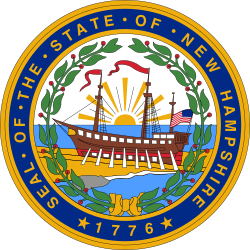General election
On election day, March 13, 1792, incumbent Anti-Federalist President/Governor Josiah Bartlett was re-elected unopposed, thereby retaining Anti-Federalist control over the new office of Governor. Bartlett was sworn in for his third term, yet his first as Governor instead of President on June 5, 1792. [2]
This page is based on this
Wikipedia article Text is available under the
CC BY-SA 4.0 license; additional terms may apply.
Images, videos and audio are available under their respective licenses.

